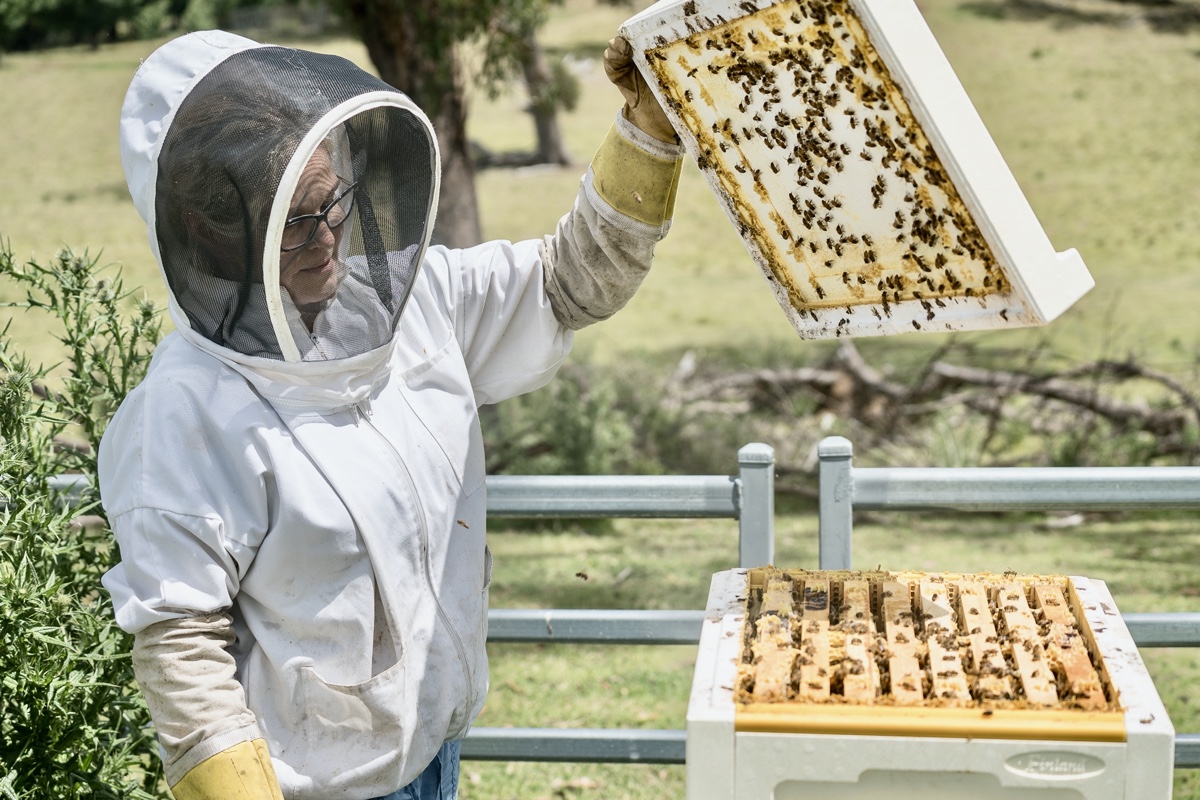The infamous chemical DDT was banned in Australia in 1987, but University of New England (UNE) research has shown that another widely-used chemical that poses similar dangers is capable of harming bees and being passed onto humans via bee honey.
In a newly published paper, UNE PhD candidate Carolyn Sonter reports on how bees interact with perfluorooctane sulfonate (PFOS), a molecule once widely used in firefighting foams that persists in the environment and accumulates in the food chain.
In a series of world-first glasshouse trials, Ms Sonter found that a bee colony contaminated with even low levels of PFOS will stop developing, while bees die as concentrations grow higher. The work also demonstrated that PFOS can transfer to honey.
"We now know how detrimental PFOS is to bees, even at low concentrations," Ms Sonter said.
"We also know that if bees do encounter PFOS in surface water and potentially plant nectar, they are likely to collect the contaminated resource and take it back to the hive where it will impact the entire colony and transfer to honey.”
Investigations into the effect of PFOS on human health only started relatively recently, but animal studies indicate that this and related per- and poly-fluoroalkyl substances (PFAS) compounds could be linked to reduced immune response and cancer, and may even potentially affect responses to vaccines[1].
PFOS was largely phased out of firefighting foams in Australia by 2004, but hundreds of PFOS-contaminated sites exist in Australia, and thousands elsewhere in the world. Airports, defence bases, fire-training and industrial areas are likely hotspots for the contaminant.
The Williamtown RAAF base, near where Ms Sonter has conducted some field sampling, is known to carry high concentrations of PFOS that have made their way into groundwater.
How PFOS is picked up by bees foraging in the environment is still unclear. Plants can take up PFOS, it is not known if the compound translocates to plant nectar. However, bees forage throughout contaminated areas and possibly drink contaminated water.
"This ground-breaking exposure trial with bee colonies has identified a new avenue for PFOS to affect environmental and human health," says Associate Professor Sue Wilson of UNE's Pollution Science Research Group, who with UNE pollination specialist Associate Professor Romina Rader is part of the research team.
"Now we need to demonstrate pathways by which the compound affects bees and humans in the environment such as via plant nectar."
Assoc. Prof. Wilson believes that the findings have significant implications for food security and protection of the environment and human health.
"Bees are essential pollinators for wild and managed ecosystems and support a multi-million dollar honey industry. Bee populations are threatened by multiple stressors, and now we know that exposure to PFOS poses another serious threat to pollination."
For Ms Sonter, the project has been a time of mixed emotions.
“My work with bees has literally been stings, sweat, and tears." she said. "In studying my favourite insect I have had to literally poison them."
"I realise, however, that in doing so I am contributing to the vital research that I hope will influence policy change and better protection for the environment. I also hope that my research increases community awareness of the vulnerability of this essential pollinator."
"Environmental pollutants are only one threat that bees face but the future does not have to be doom and gloom. Planting diverse native vegetation, reducing pesticide use, effectively managing contamination, and reducing our contribution to climate change will help provide a better outcome for native and managed bees.”
Journal article: Biological and behavioral responses of European honey bee (Apis mellifera) colonies to perfluorooctane sulfonate exposure - Sonter 2021
https://doi.org/10.1002/ieam.4421
1. https://www.bloomberg.com/graphics/2018-3M-groundwater-pollution-problem/


